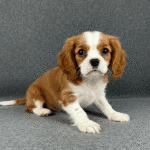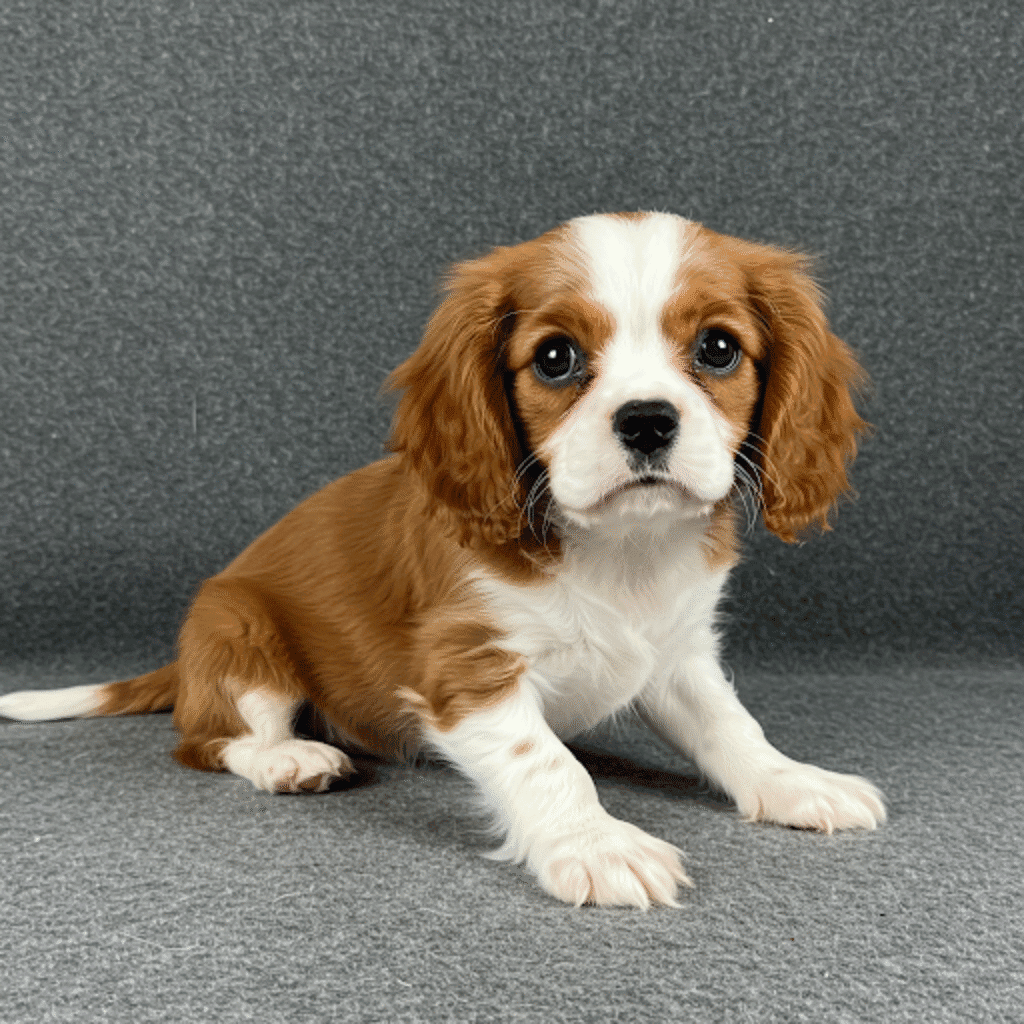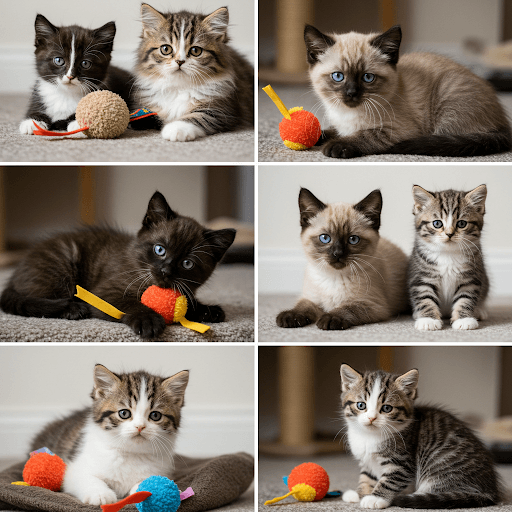
Bringing Home a Cavalier King Charles Spaniel: A Comprehensive Guide for UK Owners
The Cavalier King Charles Spaniel, with its soulful eyes, gentle nature, and elegantly plumed tail, is undeniably one of the United Kingdom’s most cherished companion dogs. These small spaniels pack an enormous amount of love and affection into their compact frames, making them wonderful pets for a wide variety of households. If you’re considering welcoming a Cavalier into your life, you’re embarking on a rewarding journey. However, the path to finding your perfect furry friend requires careful consideration, research, and a commitment to responsible ownership. This guide aims to navigate you through the process, from understanding the breed’s unique characteristics and potential health concerns to finding a reputable source and preparing for life with your new companion.
Understanding the Enchanting Cavalier King Charles Spaniel
Before you start searching for advertisements or contacting breeders, it’s crucial to understand what makes a Cavalier a Cavalier. Knowing their history, temperament, and needs will help ensure they are the right fit for your lifestyle.
A Touch of Royal History

As their name suggests, these dogs have royal connections. They are descended from the small toy spaniels seen in paintings alongside European nobility from the 16th, 17th, and 18th centuries. King Charles II was particularly fond of his spaniels, so much so that they became indelibly associated with him. While the breed standard has evolved over time, particularly with the influence of Asian toy breeds leading to flatter faces in the related King Charles Spaniel (known as the English Toy Spaniel in the US), dedicated breeders in the early 20th century worked to revive the slightly larger, longer-muzzled type depicted in historical portraits, resulting in the Cavalier we know and love today. They are classified by The Kennel Club in the Toy Group.
Temperament: The Heart of a Cavalier
The defining characteristic of a Cavalier is its temperament. They are renowned for being:
- Affectionate: Cavaliers thrive on human companionship and physical contact. They love to cuddle and are often described as “Velcro dogs” because they stick so closely to their people.
- Friendly: They are typically friendly towards strangers, children, and other pets, making them excellent family dogs. Early socialisation is still important, but their inherent nature is usually outgoing and accepting.
- Adaptable: While they enjoy playtime and walks, they are equally content snuggling on the sofa. This makes them suitable for various living situations, from apartments to houses with gardens, provided their exercise and companionship needs are met.
- Eager to Please: Cavaliers are generally intelligent and willing to please, which can make training a positive experience. They respond best to gentle, reward-based methods.
- Non-Aggressive: Aggression is highly uncharacteristic of the breed. They are lovers, not fighters!
Their gentle nature means they don’t make effective guard dogs – they’re more likely to greet an intruder with a wagging tail!
Appearance and Variety
Cavaliers are small, well-balanced dogs, typically weighing between 5.9kg and 8.2kg (13-18 lbs) and standing around 30-33cm (12-13 inches) tall at the shoulder. They possess large, dark, round eyes that convey a soft and melting expression, high-set long ears covered in silky feathering, and a moderately long, well-feathered tail that is carried happily but never much above the level of the back.
Their coat is long, silky, and free from curl, though a slight wave is permissible. There are four distinct and beautiful colour patterns recognised by The Kennel Club:
- Blenheim: Rich chestnut markings well broken up on a pearly white ground. Markings should be evenly divided on the head, leaving room between the ears for the much-prized “lozenge” or “spot,” a unique Blenheim characteristic.
- Tricolour: Black and white well-spaced, broken up, with tan markings over the eyes, on cheeks, inside ears, inside legs, and on the underside of the tail.
- Black & Tan: Raven black with tan markings above the eyes, on cheeks, inside ears, on the chest and legs, and underside of the tail. The tan should be bright. White marks are undesirable.
- Ruby: Whole-coloured rich red. White marks are undesirable.
Exercise and Grooming Needs
While adaptable, Cavaliers still need regular exercise to stay healthy and happy. Daily walks, perhaps combined with some playtime in a secure garden or park, are usually sufficient. They aren’t high-energy dogs requiring hours of running, but they do enjoy exploring and sniffing. Be mindful of their potential heart conditions when exercising, especially in hot weather.
Their beautiful silky coat requires regular grooming to prevent mats and tangles. Brushing several times a week is recommended, paying particular attention to the feathering on the ears, legs, tail, and underbelly. Regular ear checks and cleaning are vital, as their long, pendulous ears can trap moisture and debris, leading to infections. Nails should be trimmed regularly, and dental hygiene is also important.
Vital Health Considerations: Forewarned is Forearmed
Unfortunately, the charm of the Cavalier comes with significant potential health challenges. Responsible breeders work tirelessly to minimise these risks, but prospective owners must be aware of the common issues.
Common Hereditary Conditions
- Mitral Valve Disease (MVD): This is the most significant health concern in the breed and a leading cause of premature death. MVD is a heart condition where the mitral valve degenerates and leaks, eventually leading to heart failure. It often develops at an earlier age in Cavaliers compared to other breeds. Reputable breeders have their breeding stock checked regularly (annually) by veterinary cardiologists and follow specific breeding protocols to try and delay the onset of the disease.
- Syringomyelia (SM): This is a serious neurological condition where fluid-filled cavities develop within the spinal cord near the brain, often related to a skull malformation called Chiari-like Malformation (CM). It can cause pain, sensitivity (especially around the neck and shoulders), scratching (“air scratching”), weakness, and neurological deficits. Diagnosis requires an MRI scan. Responsible breeders screen potential breeding dogs via MRI, although this is expensive and not foolproof.
- Eye Conditions: Cavaliers can be prone to various eye problems, including cataracts (juvenile and adult-onset), multifocal retinal dysplasia, and Dry Eye/Curly Coat Syndrome (a complex condition affecting skin, coat, eyes, and nails, identifiable via DNA test). Annual eye examinations by a BVA (British Veterinary Association) panellist ophthalmologist are recommended for breeding dogs.
- Hip Dysplasia: While more common in larger breeds, hip dysplasia (abnormal development of the hip joint) can occur in Cavaliers. Breeders may screen for this using BVA/KC hip scoring schemes.
- Patellar Luxation: Slipping kneecaps can also occur.
- Ear Problems: Due to their ear structure, they are susceptible to infections and also Primary Secretory Otitis Media (PSOM), sometimes called “glue ear,” where the middle ear fills with thick mucus.
The Crucial Role of Health Screening
Given these potential issues, choosing a puppy from health-tested parents is paramount. Do not shy away from asking breeders detailed questions about the health testing they perform. Expect to see certificates for:
- Annual heart checks by a veterinary cardiologist (following specific MVD breeding protocols).
- BVA/KC Eye Scheme certificates (annual checks).
- MRI scans for CM/SM (ideally).
- DNA tests for Curly Coat/Dry Eye and Episodic Falling.
- BVA/KC Hip Dysplasia scores (less common but beneficial).
- Patella checks.
A responsible breeder will be transparent about the health of their lines and the tests performed. Be wary of anyone who dismisses health concerns or claims their dogs are “perfectly healthy” without providing proof of testing.
Finding Your Cavalier: Responsible Routes
The search for “Cavalier King Charles Spaniel for sale” can lead you down many paths, some much safer and more ethical than others. Your goal should be to find a healthy, well-socialised puppy or dog from a source that prioritises welfare.
The Reputable Breeder Route
A reputable breeder is dedicated to the health, temperament, and betterment of the Cavalier breed. They are not breeding primarily for profit.
What defines a reputable breeder?
- Affiliated with The Kennel Club (potentially an Assured Breeder) and/or breed clubs (e.g., The Cavalier King Charles Spaniel Club).
- Performs extensive health screening on parent dogs and is knowledgeable about breed-specific issues like MVD and SM.
- Breeds infrequently, focusing on quality over quantity.
- Raises puppies in a clean, stimulating home environment, not kennels.
- Ensures puppies are well-socialised from a young age.
- Asks *you* lots of questions to ensure you’re a suitable home.
- Provides comprehensive documentation, including KC registration, pedigree, microchipping details, vaccination records, worming schedule, and copies of parents’ health certificates.
- Offers lifetime support and will insist the dog is returned to them if you can no longer keep it.
- Allows you to meet the mother (and potentially the father) and see the puppies in their environment.
- Does not let puppies go to new homes before 8 weeks of age, often later.
How to find them?
- The Kennel Club’s “Find a Puppy” service (look for Assured Breeders).
- Websites of the official Cavalier King Charles Spaniel breed clubs in the UK.
- Attending dog shows (like Crufts) and speaking to exhibitors.
- Word-of-mouth recommendations from vets or trusted owners.
Expect to be placed on a waiting list for a puppy from a good breeder. Patience is key.
The Adoption and Rescue Route
Thousands of dogs, including purebred Cavaliers, end up in rescue centres each year through no fault of their own. Adoption offers a loving home to a dog in need.
Why consider adoption?
- You are providing a second chance for a deserving dog.
- Rescue centres often perform health checks and temperament assessments.
- You can often find adult dogs whose personality is already known.
- Adoption fees are generally lower than purchasing a puppy.
Where to look?
- Breed-specific rescues (search online for “Cavalier King Charles Spaniel Rescue UK”). Several dedicated charities operate across the country.
- General animal shelters like the RSPCA, Dogs Trust, Battersea Dogs & Cats Home, Blue Cross, etc. Let them know you are specifically interested in Cavaliers.
The adoption process typically involves an application, home check, and matching process to ensure the dog is right for you and vice versa. Be prepared that rescued Cavaliers may come with pre-existing health conditions or behavioural quirks resulting from their past experiences, requiring understanding and patience.
Red Flags: Avoiding Puppy Farms and Scams
The high demand for Cavaliers unfortunately fuels unethical breeding practices, primarily puppy farms, and online scams.
Dangers of Puppy Farms: These are large-scale commercial breeding establishments where profit is prioritised over welfare. Dogs often live in poor conditions, receive minimal veterinary care or socialisation, and parent dogs are bred repeatedly without adequate health screening. Puppies from these sources frequently suffer from severe health problems (including parvovirus) and behavioural issues (fear, anxiety).
Spotting Irresponsible Sellers and Scams:
- Advertising multiple different popular breeds (“designer” or purebred).
- Puppies always available, often with multiple litters.
- Prices significantly lower (or sometimes higher) than the average from reputable breeders.
- Reluctance to let you see the puppies with their mother or visit the premises. Excuses like “Mum is protective” or “risk of infection” are common.
- Offering to meet you somewhere convenient like a car park or service station, or offering delivery without a home visit.
- Lack of knowledge about the breed or health testing. Vague answers or missing paperwork.
- Pressure to make a quick decision or pay a deposit upfront without meeting the puppy.
- Poorly written adverts with grammatical errors.
- Requests for payment via unusual methods or wire transfers.
- Websites with stock photos or copied images.
Rule Number One: Always see the puppy interacting with its mother in the environment where it was raised. If something feels wrong, walk away. Never buy a puppy out of pity – it only fuels the trade.
The Financial Commitment: Budgeting for Your Cavalier
Owning a dog is a significant financial commitment. Beyond the initial purchase price or adoption fee, you need to budget for ongoing expenses.
- Initial Cost: Puppy prices from reputable UK breeders vary but expect to pay a substantial amount, reflecting the costs of health testing and proper care. Adoption fees are considerably lower. Initial supplies (bed, crate, bowls, leads, toys, grooming tools) also add up.
- Food: Quality dog food appropriate for their size and age.
- Routine Veterinary Care: Annual check-ups, vaccinations, flea, tick, and worm treatments.
- Grooming: Professional grooming sessions if you don’t groom them yourself, plus home grooming supplies.
- Pet Insurance: Absolutely essential for Cavaliers due to their predisposition to expensive conditions like MVD and SM. Premiums can be high, especially as the dog ages, but could save you thousands in vet bills. Research policies carefully, paying attention to cover limits, excess, and lifetime cover for chronic conditions.
- Potential Health Costs: Even with insurance, you may face costs for diagnostics (MRI scans, cardiologist consultations), ongoing medication (especially for MVD), or surgeries not fully covered.
- Other Costs: Training classes, dog walkers/sitters if needed, toys, treats, bedding replacements.
Be realistic about whether you can comfortably afford all aspects of Cavalier ownership for the dog’s entire life (potentially 9-14 years, though sadly often shorter due to health issues).
Preparing for Arrival and Life Together
Once you’ve found your Cavalier, prepare your home and yourself for their arrival.
- Puppy-Proofing: Secure loose wires, put toxic substances out of reach, remove small objects that could be swallowed.
- Safe Space: Set up a comfortable bed or crate in a quiet area where the dog can retreat.
- Supplies: Have food (the same brand the breeder/rescue used initially), water bowls, collar/harness, lead, ID tag, grooming tools, and appropriate toys ready.
- Vet Visit: Schedule an initial check-up with your chosen vet soon after arrival.
- Training and Socialisation: Enrol in puppy classes (once vaccinations are complete) and continue positive reinforcement training at home. Gently expose your Cavalier to various sights, sounds, people, and well-behaved dogs to build confidence.
- Routine: Establish a consistent routine for feeding, potty breaks, walks, and sleep.
A Lifetime of Love and Responsibility
Owning a Cavalier King Charles Spaniel is a deeply rewarding experience. Their loving nature and charming personalities bring immense joy. However, this joy comes with significant responsibility. It requires a commitment to providing excellent care, understanding their specific needs, being prepared for potential health challenges, and, crucially, ensuring you acquire your companion from a responsible and ethical source.
By doing your homework, asking the right questions, and resisting the temptation of seemingly easy or cheap options, you significantly increase your chances of welcoming a healthy, happy Cavalier into your home for many years of shared adventures and cuddles. Choose wisely, love deeply, and cherish every moment with this truly special breed.







